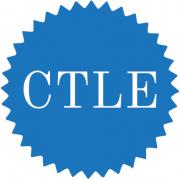Way Beyond Seneca Falls: Women’s Suffrage, an Unfinished Revolution, and the Power of Place in NY
March 28, 2023 (This Event Has Passed)
Free
Voting rights are the essential building block of our democracy. Yet voting rights for many people remain endangered today. And for most of U.S. history, only a minority of U.S. citizens could vote, mostly property-owning white males. That changed with the 19th amendment to the Constitution in 1920, the culmination of the largest nonviolent movement for social change in American history, recognizing voting rights for women as well as men. New York State played a key role in that story. This presentation highlights the importance of grassroots action by women and men, both Black and white, in New York State’s historic movement for woman suffrage. It challenges us to consider whether community-based organizing remains a powerful tool in the unfinished revolution for voting rights today.
Judith Wellman is the Principal Investigator, Historical New York Research Associates, and Professor Emerita, State University of New York at Oswego. Judith focuses on historic sites relating to women’s rights, the Underground Railroad, and African American life across New York State. She lives in a house with unruly gardens on the banks of a millpond in upstate New York. She views historical work relating to equal rights as a contribution to a future of mutual respect and justice for all people.
This event has been organized by the New York State Archives Partnership Trust in partnership with the New York State Museum.
Continuing Teacher and Leader Education (CTLE)
The New York State Museum is an approved provider of Continuing Teacher and Leader Education (CTLE). Educators can earn CTLE credit by watching the webinar and completing the survey linked below. Please allow up to four weeks to receive confirmation of completion.
CTLE Credit (1 hour): Link to Online Form for Beyond Seneca Falls

Continuing Teacher and Leader Education (CTLE)
The New York State Museum is an approved provider of Continuing Teacher and Leader Education (CTLE). Educators can earn CTLE clock hours by watching the webinar and completing the survey linked below. Please allow up to four weeks to receive confirmation of completion.
Link to Online Form for Beyond Seneca Falls 1 credit hour


